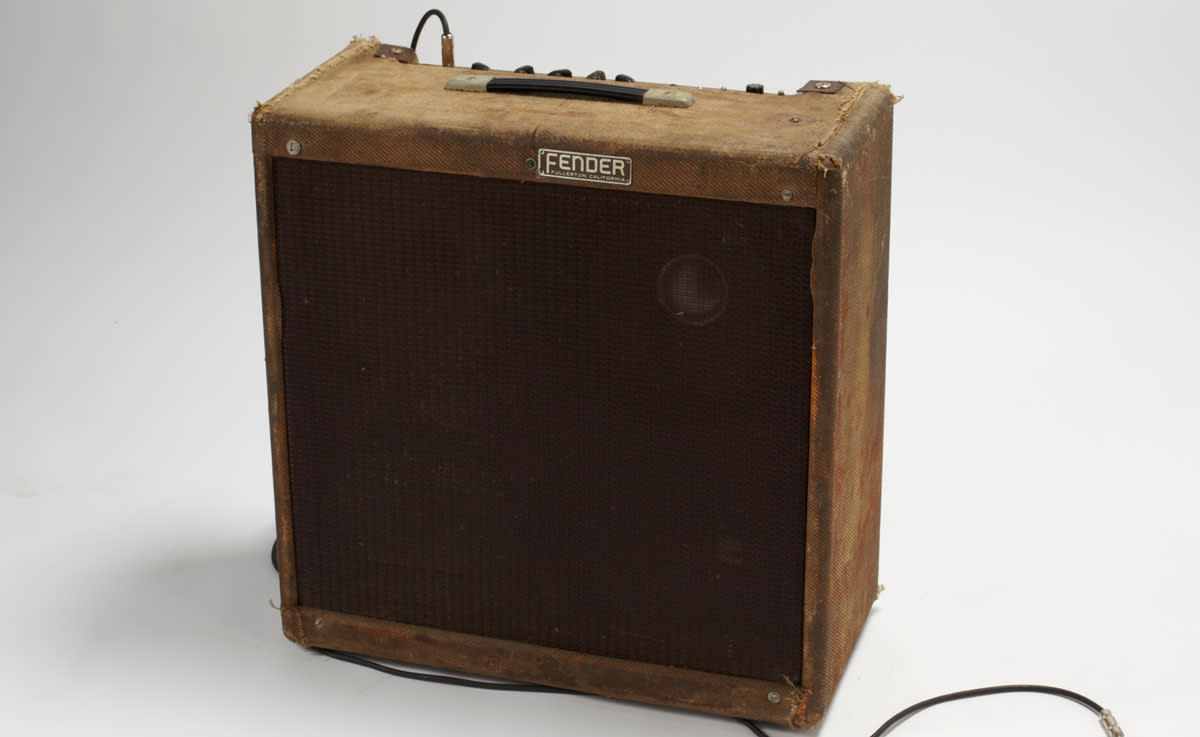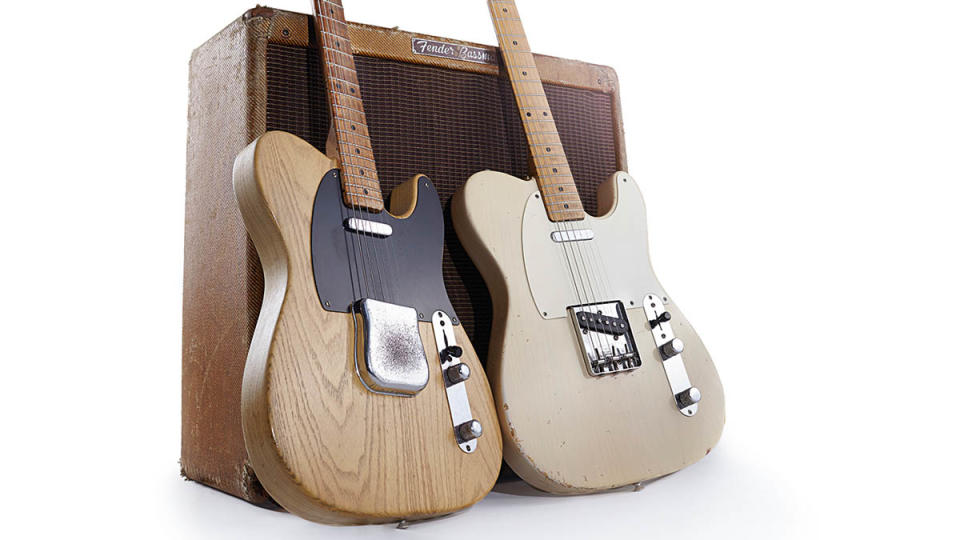Why the 4x10 Bassman is considered the best-sounding Fender amp of all time

The tweed Fender 4x10 Bassman combo “may be the best-sounding guitar amp Fender ever made,” wrote Groove Tubes founder Aspen Pittman in The Tube Amp Book.
That’s a pretty grand statement considering that dozens of Fender amps, including models like the Deluxe/Deluxe Reverb, Dual Professional/Super, Princeton Reverb, Super Reverb, Twin/Twin Reverb and Vibroverb, their tweed, blonde, brown and blackface variants, more obscure, shorter-lived models like the Harvard, 3x10 Bandmaster and Vibro King and even the diminutive tweed Champ all have rabid fans.
But considering the long and illustrious history of the tweed 4x10 Bassman, particularly its role in the development of the modern guitar amp, it’s hard to argue against that statement.
When guitarists wax poetic about the tweed Bassman, usually they’re referring to the 5F6A circuit that Fender produced from 1958-60. The first Bassman amps introduced in 1952 had a single 15-inch speaker, followed in 1954 Fender by the first Bassman combo with four 10-inch speakers.
Fender produced four different circuits before refining the legendary 5F6A circuit that Bassman aficionados consider the ultimate version. The magic of this circuit was a combination of alterations, improvements and upgrades made over the years, including a cathode follower tone stack with midrange control, a presence control, a GZ334 tube rectifier and a long-tail-pair phase inverter that provided improved clean headroom.

A pair of 5881 tubes delivered 45 watts of output, and four 10-inch Jensen alnico speakers kept the bass tight and focused to please its intended customer base, while providing sweet, harmonically rich midrange and crystalline treble that sound great with guitar.
Although Fender dramatically altered the Bassman design in 1960 with the introduction of its first piggyback version featuring the 6G6 circuit, the 5F6A’s immortal status was cemented a few years later in 1962 when Marshall essentially copied the circuit for its first amp, the JTM45. Many amps that have followed over the subsequent decades, including high-gain Soldanos and 5150s, have a lot of 5F6A DNA in their circuits that has remained intact throughout the years.
Jimmie and Steve Ray Vaughan revived the Bassman as the amp du jour for blues enthusiasts during the late ’80s and early ’90s
The tweed Bassman is also immortal for the role that it played in music from the late ’50s onward. It was initially heard in Buddy Holly’s rock ’n’ roll, Buddy Guy’s blues and even country music via Luther Perkins with Johnny Cash.
During the ’70s the tweed Bassman lived on, thanks to players like Roy Buchanan, Howard Leese with Heart, Robbie Robertson, Bruce Springsteen and many others. Jimmie and Steve Ray Vaughan revived the Bassman as the amp du jour for blues enthusiasts during the late ’80s and early ’90s.
In 1990, the 4x10 Bassman became the first tweed model reissued by Fender, kicking off a highly popular revival of Fender tweed amps that continues to this day. While the first reissues had features like a plywood cabinet and solid-state rectifier, the current ’59 Bassman LTD more closely resembles the original, thanks to its four Jensen P10R speakers, finger-jointed solid pine cabinet, lacquered tweed, 5AR4 rectifier, internal bias pot and more.
The reissues sounded good enough to win over discriminating players like Jeff Beck, Eric Clapton, Stone Gossard and Mike McCready of Pearl Jam, Tom Petty, Chris Shiflett and many others.
The reissue tweed Bassman was arguably more popular during the ’90s than the original was during the previous four decades, heard in concert and recordings by artists of numerous styles like grunge, punk, hard rock, blues, rockabilly, country, jazz and much more.
Suggested settings
Yellow Ledbetter clean (Strat with middle/neck pickup setting)
Presence: 7, Middle: 8, Bass: 4,Treble: 5, Vol. Bright: 4, Vol. Normal: 0, Input: Bright 1
Drain You grunge crunch (Fender-style guitar with bridge humbucker)
Presence: 5, Middle: 8, Bass: 6, Treble: 7, Vol. Bright: 8, Vol. Normal: 5, Input: Bright 1

